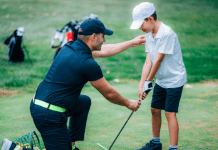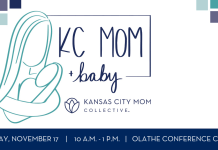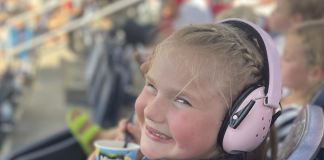“All that matters is a healthy baby.”
How many times have you heard this phrase when talking about an ultrasound? I’ve used it many times when wondering about the gender of my children or chatting with my pregnant friends. While I meant well, it is a phrase I am done using.
What does that phrase mean for a baby whose health is unknown based on a questionable scan?
Or for a mom who does not find out there is a problem with the spinal formation until birth? Or for a baby whose kidneys are swollen and retaining fluid? Or for a baby who has a mass on their lungs? Or for the mom whose baby will not make it to 40 weeks? Or for _________?
I’ve worked through these questions myself and with my dear friends who are dealing with painfully difficult news from their 20-week ultrasound.
My Experience: A Traumatic Ultrasound
 At 19-weeks-pregnant, we had a traumatic ultrasound. Our baby was suspected to have a missing limb with a number of other physical or cognitive differences. At that first scan, we did not know “for sure” there was anything different for our baby girl until the following week when I had an additional more extensive scan. It was confirmed without a doubt: She was missing her left hand, and to make it more traumatic, there was an additional list of possible complications also suggested.
At 19-weeks-pregnant, we had a traumatic ultrasound. Our baby was suspected to have a missing limb with a number of other physical or cognitive differences. At that first scan, we did not know “for sure” there was anything different for our baby girl until the following week when I had an additional more extensive scan. It was confirmed without a doubt: She was missing her left hand, and to make it more traumatic, there was an additional list of possible complications also suggested.
The ultrasounds I previously looked forward to with excitement during my sons’ pregnancies turned into unstoppable tears, a nervous stomach, and clenched fists with this one.
You have probably heard of the stages of grief, so based on my experiences after first hearing about my daughter’s complications, here are the stages I went through.
STAGE 1: Feel ALL the Feelings
There was a surplus of feelings and emotions that rattled around my mind as I waited for the technician to complete each scan. Depending on how forthcoming she was (all of mine were females), she may or may not have given us clues about what we would hear. I would silently start weeping, holding my breath and Joe’s hand before the doctor met with us. There was an ache in my gut. And the questions in my mind were dizzying…
Fear—Is my baby going to be ok? Can I handle this situation?
Despair—Will the news I get this time be worse than last time?
Disbelief & Hope—Is this a nightmare? If I pray hard enough, will this go away?
Grief—Will my baby be able to have the “normal” life I want for her?
Guilt—What did I do wrong? What could I have done differently? What could I be doing now to help my baby?
Eventually, these feelings loosened their grip, and the joy and excitement of meeting my baby girl came back, but they were tinged with doubt about the future. There were so many unknowns, but the place for her in my heart was reserved wholly for her.
Do not back down from the feelings, but if you feel like you are in over your head, reach out to your OB for counseling resources.
Stage 2: Relinquish ALL the Blame
Gradually, the shock of the diagnosis wore off and the reality or numbness settled in. We met with a team of experts at Children’s Mercy Hospital, and they told me something I had been holding my breath to hear.
“THIS IS NOT YOUR FAULT.”
It opened a door. It allowed me to forgive a wrong that I never committed. I finally believed what my husband told me on repeat , “this was not your fault.” In our case, the baby did not have any of the accompanying complications. She is a healthy toddler without a left hand or forearm.
Listen to your community when you find yourself in a blame spiral. Remind yourself daily that you didn’t cause it, you can’t control it and you can’t cure it.
Stage 3: Take Small Steps Forward
The list of “things to be grateful for” can be hard to find, when you’re experiencing a traumatic event with so many unknowns. Cliché as it sounds, finding the good or sliver of hope (however small) can help ease the sense of the free fall. When discussing the process for navigating tough news and complications during pregnancy with other moms, I found some similarities in what helped us survive. Two things that we had in common was our need to tell our families about our baby and our need to educate ourselves and others about what to expect when the baby arrived.
Communication with Family
Telling friends and family is hard. It can provide a ton of support and an overwhelming amount of questions. If you aren’t ready to field a million questions, it’s ok to say, “I’m not ready to talk more about this” or “You’ll hear updates about the baby’s condition in a biweekly email.”
There is a difference between “reporting” about the baby or the ultrasounds and “processing” the ultrasounds. I called my mom, spoke with my mother-in-law, and Facetimed my sister frequently as I worked through my fear. It kept me grounded and allowed me to process through new information as it came.
Education about the Baby’s Difference
For me, finding every ounce of information helped me wade through what to expect.
I would write LISTS of questions to “ask the experts.” I spoke with parents of children with limb differences. I joined groups on Instagram and Facebook. I read every word in the pamphlets that Children’s Mercy gave me. I asked and re-asked our friends who are doctors and pediatricians. I looked up tools that would help my daughter in the future and researched prosthetics. While this “knowledge is power” approach may not work for everyone (information overload is real), it helped ground and assure me that I could be a capable mom to a child with a limb difference.
Stage 4: Embrace the Baby You Have
“All that matters is a healthy baby.”
NOT TRUE.
Your medically fragile baby and my physically different baby matter, too. Redefining what life will look like when the baby comes is a critical part of embracing the baby you are carrying.
Another important mind shift is that “normal” is fluid. Your normal is not going to be mainstream. Your baby may spend months in the NICU before you get to bring him home, your baby may not eat on schedule or through her mouth, and that is YOUR baby’s normal. Understanding this is important because it allows you to celebrate your child instead of compare and despair.
There are so many unknowns about having a baby without putting pressure to have it “all figured out.” Allow yourself the space to learn from your baby when the child arrives.

One part of embracing your baby may be educating the people around you about the baby’s future. Consider connecting your parents, in-laws, and other close relatives to resources about your child’s differences. As you teach others about what is coming, you become more confident. This preparation brings peace that you may not be able to control the challenge your baby will face, but you can begin supporting and protecting your child through educating others.
Stage 5: Seek Community and Support
An enormous blessing that has come from our daughter, which I never could have imagined during those traumatic ultrasounds, is the community of other parents and children with the same difference she has. Build friendships with people who live nearby and can support and encourage you in hard times. It took a pandemic for me to learn this lesson.
While I will no longer be using the phrase “as long as the baby is healthy,” I will remind other soon-to-be mamas that whatever the ultrasound shows, they aren’t alone.
















I needed to read this. Waiting to get in with a MFM right now to check to see if our baby has abnormalities. It’s scary.